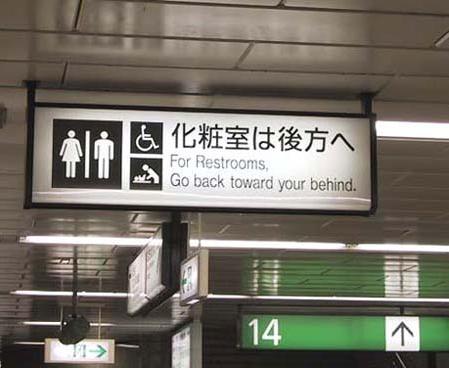First, we apologize for an outage on the J-List and JBOX.com websites, which was caused by a bad router at our ISP. During part of the problem, the J-List site was functional but search and shopping cart functions were broken (ouch). The issue has been fixed and the site is up and ready for you right now.
One interesting aspect of Japanese relationships are the invisible rules that govern what you should call others, which can be very complex can nuance-filled. A man named Taro Yamada might be called “Yamada-san” by his co-workers (polite), “Yamada” by his boss at work or his male friends, and “Taro” by his family or his girlfriend. What you call someone is important, since it defines your perception of your relationship with the other person, and choosing the “wrong” thing to call them might lead to misunderstandings or bad feelings. In an episode of an anime I’m watching now, a girl and boy who’ve started dating struggle to get past calling each other by their family names, which places a distance between them that neither wants. When the girl’s younger sister asks why the boyfriend calls her sister by her last name, the two turn red-faced as they struggle to get used to using each other’s first names so their relationship can progress. What’s interesting to me is that this is such a conscious, out-in-the-open thing that everyone is aware of, not under the surface at all. As usual, my impressions of Japan are filtered through my experiences as an American, and I often get the sense that some of the customs that seem odd to me might not feel so strange to someone from the U.K. — in the Narnia books, for example, I’ve noticed dialogue between characters that seemed to follow these Japanese-style naming rules even though it was in English. It wouldn’t be the first time I was confused by someone I encountered in Japan only to have it turn out to be somehow related to England instead.

You may know that there there are a total of four writing systems used in Japan: hiragana, a syllable-based script for writing basic Japanese words and grammatical particles; katakana, a mirror of hiragana that’s used to express foreign loan words and names; kanji, the Chinese writing system used for more complex verbs, nouns and adjectives; and unofficially, the Roman alphabet romaji, for expressing concepts like FOR RESTROOMS, GO BACK TOWARDS YOUR BEHIND. While constantly mixing multiple writing systems sounds like a confusing mess, learning to read Japanese effectively isn’t nearly as difficult as you may think — it’s a logical framework that you can approach in a methodical fashion. Reading Japanese from a different era, however, can be quite a challenge, and even Japanese written around World War II can be quite hard to read, between archaic versions of kanji and hiragana (like the always fun ゐ or ゑ), writing that sometimes went left-to-right and other times right-to-left, and decidedly odd ways of writing kana resulting in something about as strange to my eye as Shakespere must look to Japanese readers. It turns out that after the war ended, there was a movement to standardize and modernize the Japanese language, which eliminated a lot of weird and unused characters, resulting in a much more approachable language overall. I’d like to say, on behalf of gaijin everywhere, thanks to whoever was in charge of this.
The next time you come to Japan, you will probably be fingerprinted and photographed in accordance with a new program about to be put in motion by the Japanese government. It’s not that big a deal, of course — every foreign visitor to the U.S. has been going through the same process for years, smiling for the camera and presenting their right forefinger. While part of the impetus for the move is embarrassment that a member of Al Qaeda managed to enter Japan in 2004, I know the move for what it really is: the latest example of Japan following the lead of West, in this case specifically the U.S. In many areas, Japan as a nation seems content to follow behind the United States and Europe, taking cues on everything from its laws on seku-hara (sexual harassment in the workplace) to how much money you can bring into the country in cash (US$10,000), and the fingerprinting of incoming foreigners (Japan-born Koreans are exempt) is just another way of imitating America. Another factor is probably Japan’s desire to feel that it’s a part of the global “war on terror” despite the fact that Japan is a pretty peaceful place that’s not generally hated by most of the world — Japan clearly wants to be nakama-iri (part of the same in-group) as the U.S. and Europe. Considering that all terrorist attacks in Japan have come from domestic elements like the Aum religious cult and the Japanese Red Army, I predict the whole finferprinting project will be a big boondoggle that does nothing but create a database of information that no one will ever look at.
Interested in learning some Japanese? Whether you’d like to just learn the basics of hiragana and katakana, learn some fun phrases that can make you the life of the party or make an organized plan to master the entire language, J-List offers a wide range of textbooks, kanji study cards, workbooks, electronic dictionaries and other useful tools that can really help you reach your goal. Why not browse our lineup of study related items now?















